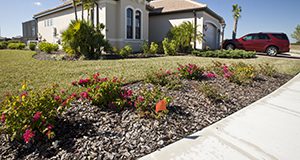Abstract
With increasing concerns related to water in Florida, Extension can target households with irrigated landscapes to promote landscaping practices that protect water quality and quantity. We used landscape design features from 2,100 Florida households to segment households into subgroups that may have different educational needs. Data analysis revealed two distinct subgroups based on landscape design features: the diversity-prone water protectors and the apathetic landscape minimalists. Comparison of subgroups revealed that compared to apathetic landscape minimalists, households in diversity-prone water protectors’ subgroup had higher personal obligation, more social support, stronger perceived behavioral control, and more engagement in water protection behaviors. Extension professionals can use the connection between diverse landscape design features and to water protection behaviors to encourage good irrigation and fertilizer practices.
References
Ajzen, I. (1991). The theory of planned behavior. Organizational Behavior and Human Decision Processes, 50(2), 179-211. https://doi.org/10.1016/0749-5978(91)90020-T
Kumar Chaudhary, A., & Warner, L. A. (2017). Segmenting households using landscape design features to understand irrigation and fertilization behaviors. Journal of Extension. Manuscript submitted for publication.
Lamm, K. W., Lamm, A. J., & Carter, H. S. (2015). Bridging water issue knowledge gaps between the general public and opinion leaders. Journal of Agricultural Education, 56(3), 146-161. doi:10.5032/jae.2015.03146 https://doi.org/10.5032/jae.2015.03146
Leal, A., Rumble, J., & Lamm, A. J. (2015). Setting the agenda: Exploring Floridian's perceptions of water quality and quantity issues. Journal of Applied Communications, 99(3), 53-67. Retrieved from http://newprairiepress.org/cgi/viewcontent.cgi?article=1058&context=jac https://doi.org/10.4148/1051-0834.1058
Marella, R. (2014). Water withdrawals, use, and trends in Florida, 2010. U.S. Geological Survey. Retrieved from http://pubs.usgs.gov/sir/2014/5088/pdf/sir2014-5088.pdf https://doi.org/10.3133/sir20145088
Martini, N. F., Nelson, K. C., Hobbie, S. E., & Baker, L. A. (2015). Why "feed the lawn"? Exploring the influences on residential turf grass fertilization in the Minneapolis− Saint Paul metropolitan area. Environment and Behavior, 47(2), 158-183. doi:10.1177/0013916513492418 https://doi.org/10.1177/0013916513492418
Newton, J., J. Newton, F., Turk, T., & T. Ewing, M. (2013). Ethical evaluation of audience segmentation in social marketing. European Journal of Marketing, 47(9), 1421-1438.doi:10.1108/EJM-09-2011-0515uf libr https://doi.org/10.1108/EJM-09-2011-0515
Shahli, F. M., Hussain, M. R. M., Tukiman, I., & Zaidin, N. (2014). The importance aspects of landscape design on housing development in urban areas. APCBEE Procedia, 10, 311-315. doi:10.1016/j.apcbee.2014.10.058 https://doi.org/10.1016/j.apcbee.2014.10.058
United States Environmental Protection Agency. (2017). Florida water quality assessment report. Retrieved from https://ofmpub.epa.gov/waters10/attains_state.control?p_state=FL
University of Florida Institute of Food and Agricultural Sciences [UF/IFAS]. (2011). Shaping solutions for Florida's future: The University of Florida extension roadmap 2013-2023. University of Florida. Retrieved from http://pdec.ifas.ufl.edu/roadmap/FloridaExtensionRoadmap_2013-2023.pdf
Warner, L. A., Kumar Chaudhary, A.; Rumble, J. N., Lamm, A. J., Momol, E. (2017). Using audience segmentation to tailor residential irrigation water conservation programs. Journal of Agricultural Education, 58(1), 313-333. doi:10.5032/jae.2017.01313 https://doi.org/10.5032/jae.2017.01313
Warner, L. A., Lamm, A., Martin, E., Rumble, J., & Momol, E. (2016). Encouraging landscape water-conservation behaviors #5: Segmenting the audience based on HOA status. Gainesville: University of Florida Institute of Food and Agricultural Sciences (AEC584). Retrieved from http://edis.ifas.ufl.edu/pdffiles/WC/WC24600.pdf
Unless otherwise specified, articles published in the EDIS journal after January 1, 2024 are licensed under a Creative Commons Attribution-NonCommercial-NoDerivs 4.0 International (CC BY-NC-ND 4.0) license.

